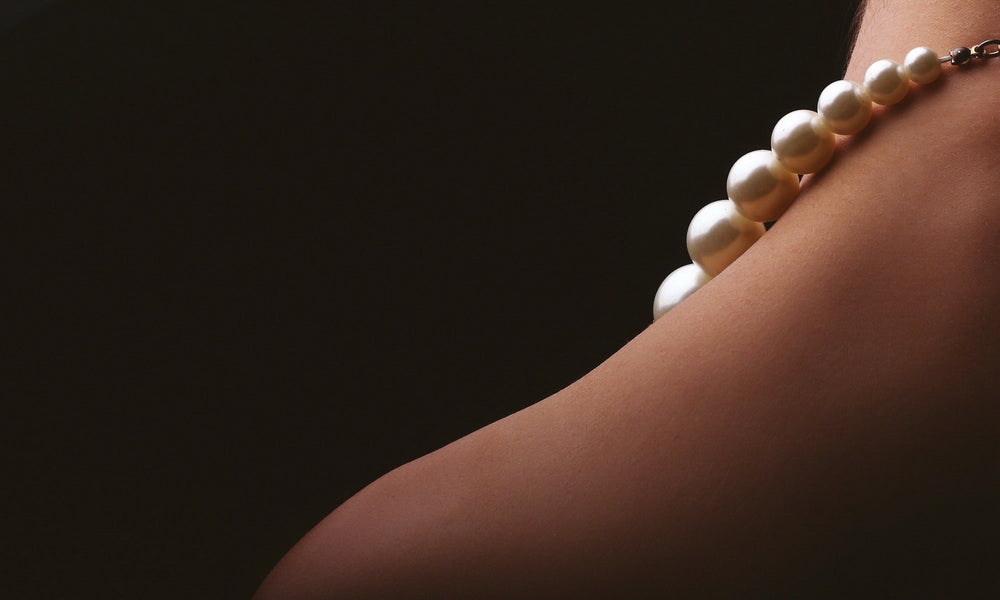
The pearls next door
Pearls. Aren’t they celestial and unfailingly elegant? Have you ever wondered why the threshold to heaven is called the “Pearly gates”?
Pearls are the only gemstones formed inside a living creature and nothing can beat the mystique and glorious charm they have. There’s a reason why all fashion icons have had love-affairs with them; it's because they exude sophistication. They are timeless, classic and versatile, like Jackie Kennedy once quipped, “Pearls are always appropriate.” The quintessential exemplar, could be Maharani Gayatri Devi of Jaipur who donned pearl strings almost at all the times along with her signature chiffon sarees. Also, who can forget Princess Diana’s obsession for a pearl choker.
This alluring gem has a rich cultural and historical significance as well. According to ancient Chinese belief, the moon holds the power to create pearls, while Ancient Arabic legend credits the birth of pearls to the dewdrops filled with moonlight which fell into the ocean and then got swallowed by oysters.
No grit. No pearl
The process of formation of pearls throws a major life lesson.
Natural pearls are formed by a piece of grit getting into the oyster shell, and in order to protect itself from the irritation of the grit, the oyster begins to form defensive layers over the grit, embracing it, and over time evolving into a beautiful pearl.

Buddhism has a meaningful term for it called Dukkha which refers to suffering and discomfort, which human life comes with and one should embrace it, to evolve as a winner in life.
On the other hand, cultured pearls are made almost in the same fashion, except that the pearl farmers deliberately embed grit into the oyster shells to create this impact. Grit, hard work and perseverance results in the birth of the most sought-after jewel piece in the world.
Types
• Freshwater pearls
Freshwater pearls are popular, with a distinguishing characteristic of rarely being in perfect round shapes.
• South Sea Pearls
South Sea pearls are rare, huge and of exceptional quality. Their size differentiates them from other pearls and their smoothness and roundness are near to perfect.
• Akoya Pearls
Akoya Pearls were the first-round cultured pearls. They stand out from the rest of the pearls because of their brilliant mirror-like lustre.
• Tahitian Pearls
These are the only pearls that come in exotic natural colours. Mostly black, the Tahitian pearls also come in shades of dark green, brown and blue.
• Biwa Pearls
Biwa pearls get their name from the Japan’s largest lake- Biwa, from where they originate. They are known for their unique shapes and unusual contours.
• Baroque Pearls
What makes Baroque pearls distinct from the conventional round shaped pearls is that that they come in fun shapes and sizes.
Freshwater Pearls are Unique and timeless

Freshwater pearls are capable of adding infinite charm and elegance to any jewellery. They are known for their rich orient which occurs due to the composition of pure nacre. Although freshwater pearls are produced commonly, their unique shapes and distinct colours made them a popular choice among jewellery designers, shoppers and pearl connoisseurs alike. Recently, the world's largest freshwater pearl, Sleeping Lion; was sold for the second time in 240 years. It once belonged to the Russian Empress, Catherine the Great.
What makes freshwater pearls stand out?
They are known to stand tall for their whimsical shapes and various colours but what makes them special, is the distinctive surface texture and the warmth of its lustre.
A woman’s best friend
For a visionary, pearls can be a metaphor – for transforming a shingle into something so beautiful and, by persistence, how to turn a hurdle into a new form of life. So much to learn from this little gem of a stone, so classy and elegant, undoubtedly a woman’s best friend.


Leave a comment
Also in Blog Posts
Anniversary Gemstones : A Complete Guide
By Nirwaana Admin February 27, 2021
We all have known about birthstones. But did you know there are specific gemstones to mark celebration of each anniversary milestone? Well yes, wedding anniversaries too have gemstones associated. Here we’ve compiled a list of ‘anniversary gemstones’ for each year. Next time you want to pick a gift for the wedding anniversary, make it super special! There is nothing is better than a gemstone jewelry, devoted to a particular anniversary.
Continue reading
Choose The Jewelry That Suits You Most
By Nirwaana Team 1 January 21, 2021
Continue reading
What Metal & Gemstone Colours Look The Best On You
By Nirwaana Admin June 15, 2020
Here are simple guidelines to select jewelry that suits your skin undertone, which will make your next online jewelry purchase easy & convenient.
Continue reading